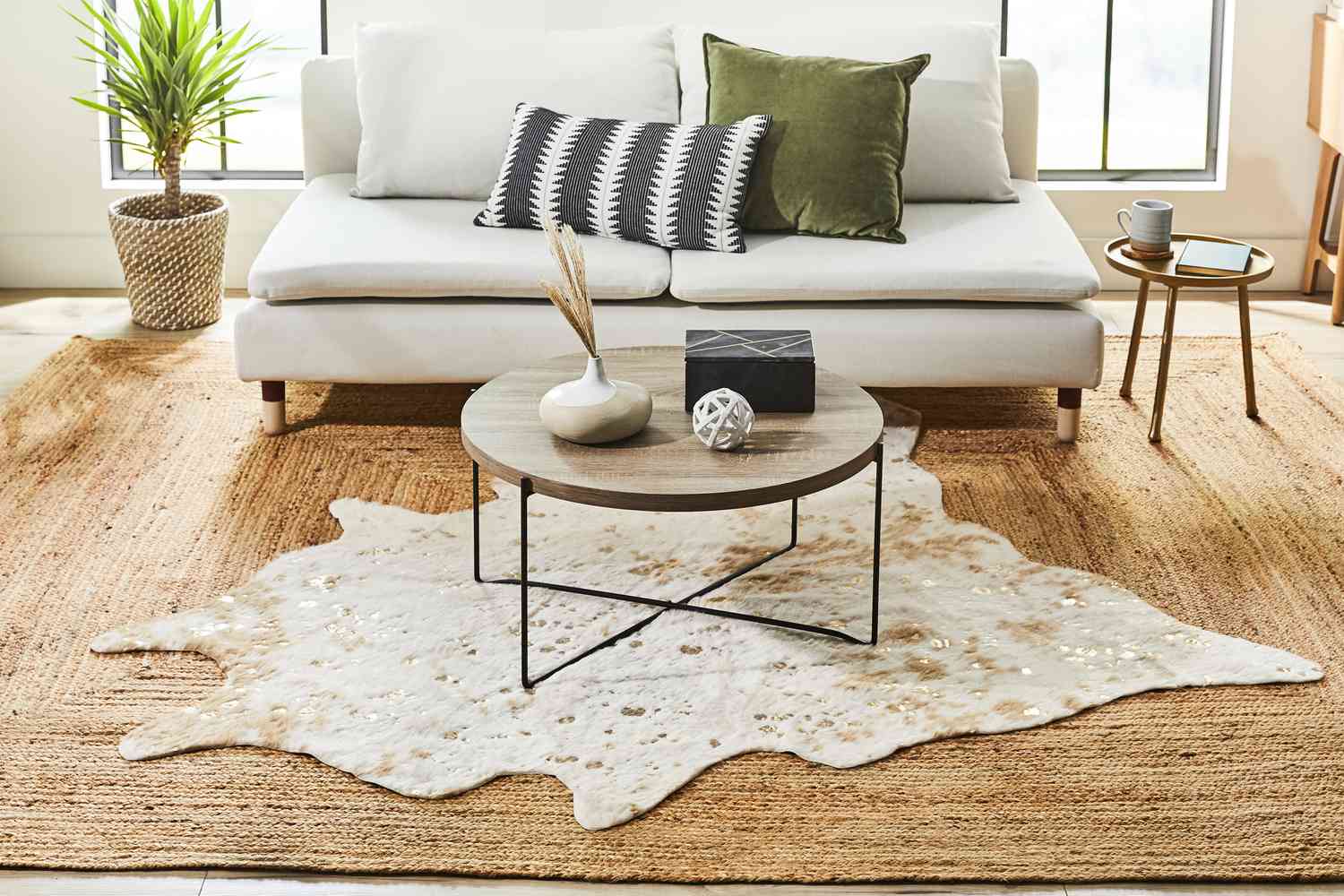

Articles
How To Layer Rugs In Living Room
Modified: October 20, 2024
Learn how to layer rugs in your living room with our informative articles. Discover tips and tricks to create a stylish and cozy space.
(Many of the links in this article redirect to a specific reviewed product. Your purchase of these products through affiliate links helps to generate commission for Storables.com, at no extra cost. Learn more)
Introduction
When it comes to interior design, a well-laid-out living room sets the tone for the entire space. One way to add visual interest and warmth to your living room is by layering rugs. This design technique allows you to showcase multiple rugs in a cohesive and stylish manner, creating a dynamic and inviting atmosphere.
In this article, we will explore the art of layering rugs in your living room. From choosing the right rugs to arranging them in a way that enhances the overall aesthetic, we will provide you with practical tips and ideas to elevate your living room design.
By layering rugs, you can bring texture, color, and pattern to your living room, making it feel cozy and welcoming. Whether you want to create a focal point, define separate areas, or add a touch of luxury, the possibilities are endless when it comes to layering rugs.
We will guide you through the process of selecting the perfect rugs, considering factors such as colors, patterns, sizes, and shapes. Additionally, we will discuss proper rug placement, including aligning the rugs correctly and taking the room layout into account.
Moreover, we will delve into the art of adding a top rug to create visual interest. You will learn how to choose a complementary or contrasting rug and position it in a way that enhances the overall design of the living room.
To create a harmonious look, we will share tips on blending patterns and textures. Mixing different patterns and textures can add depth and dimension to your living room, giving it a personalized and eclectic touch.
Furthermore, we will explore how layering rugs can be used to create zones and visual dividers in your living room. Whether you have an open floor plan or simply want to define separate areas within a larger space, rugs can be a practical and stylish solution.
Lastly, we will discuss the importance of maintenance and care when it comes to layered rugs. Regular cleaning and vacuuming are essential, and we will provide insights on how to deal with spills and stains to keep your rugs looking fresh and vibrant.
By the end of this article, you will have a comprehensive understanding of how to successfully layer rugs in your living room. So, let’s dive into the world of rug layering and transform your living space into a visually stunning and comfortable oasis.
Key Takeaways:
- Elevate your living room with layered rugs, creating visual interest and defining separate areas. Experiment with colors, patterns, and textures to reflect your personal style and add depth to your space.
- Maintain the beauty of your layered rugs with regular cleaning, prompt stain treatment, and professional care. Preserve the longevity and vibrancy of your rugs for a visually stunning and inviting living room.
Read more: How Do You Layer Rugs
Choosing the Right Rugs
When it comes to layering rugs in your living room, the first step is to choose the right rugs that will complement each other and enhance the overall design of the space. Here are some key factors to consider:
Colors and Patterns: Start by considering the color scheme and design style of your living room. While you can opt for rugs that have similar colors or patterns, don’t be afraid to mix and match different patterns and textures for a more eclectic and visually interesting look. Consider the existing furniture and decor in the room to ensure the rugs will harmonize with the overall aesthetic.
Sizes and Shapes: The size and shape of the rugs are crucial for achieving the desired layered effect. The base rug should be larger and serve as a foundation, anchoring the furniture arrangement. The top rug, on the other hand, can be smaller and more decorative, adding a pop of color or pattern. Experiment with different sizes and shapes to create visual interest and balance in the room.
Texture and Material: Rugs come in various materials and textures, such as wool, jute, sisal, or even faux fur. Consider the texture and material of the rugs to add depth and tactile appeal to your living room. In high-traffic areas, opt for durable and easy-to-clean materials, while in cozier areas, you can indulge in softer and more plush textures.
When choosing the rugs, it’s essential to keep in mind the overall theme and mood you want to create in your living room. Whether you aim for a modern, traditional, bohemian, or eclectic style, selecting the right rugs will contribute to the overall aesthetic and ambiance of the space.
Once you have identified the ideal rugs that fit your style and living room, it’s time to move on to arranging them in a way that showcases their beauty and creates a harmonious layered look. In the next section, we will discuss how to arrange the base rug and ensure proper placement and alignment.
Considering Colors and Patterns
When layering rugs in your living room, one of the most important aspects to consider is the colors and patterns of the rugs. The right combination can create a visually stunning and harmonious look, while the wrong combination can create a chaotic and mismatched appearance. Here are some tips to help you navigate the world of colors and patterns when layering rugs:
Complementary Colors: Choose rugs that have complementary colors to create a cohesive and balanced look. Complementary colors are opposite each other on the color wheel, such as blue and orange or green and red. By selecting rugs with complementary colors, you can create a visually pleasing contrast that adds depth and interest to your living room.
Harmonious Colors: If you prefer a more serene and harmonious look, opt for rugs that have similar colors or belong to the same color family. This creates a cohesive and calming atmosphere in your living room. For example, if you have a neutral color scheme, you can choose rugs in various shades of beige, cream, or gray.
Contrasting Patterns: Mixing patterns can add a vibrant and eclectic touch to your living room. However, it is important to select patterns that have contrasting scales and styles to maintain balance. For example, pair a large-scale geometric pattern with a smaller floral pattern, or combine a bold striped rug with a more subtle abstract pattern.
Pattern Proportions: Consider the proportions of the patterns when layering rugs. If you have a larger base rug with a bold pattern, opt for a smaller top rug with a more intricate or subtle pattern. This creates a visually appealing balance and prevents the patterns from competing with each other.
Texture and Tone: In addition to colors and patterns, consider the texture and tone of the rugs. A mix of textures, such as a shag rug paired with a flat-woven rug, adds visual interest and depth to your living room. Similarly, rugs with different tones, such as a light and a dark rug, can create contrast and make the layered effect more pronounced.
Remember, there are no hard and fast rules when it comes to selecting colors and patterns for layered rugs in your living room. It’s ultimately a matter of personal preference and how you want to express your style. Don’t be afraid to experiment and mix different colors and patterns to create a unique and captivating look.
Next, we will discuss selecting the right sizes and shapes for your layered rugs, as well as the proper placement and alignment of the base rug in your living room.
Determining Sizes and Shapes
When layering rugs in your living room, it’s crucial to consider the sizes and shapes of the rugs to achieve a balanced and visually appealing look. Here are some factors to keep in mind when determining the sizes and shapes of your layered rugs:
Base Rug Size: The base rug serves as the foundation for layering. It should be larger than the top rug and cover a significant portion of the living room floor. A general rule of thumb is to ensure that all the main furniture pieces, like the sofa and chairs, are placed entirely on the base rug. This creates a cohesive and anchored look for the furniture arrangement.
Top Rug Size: The top rug can vary in size, depending on the desired aesthetic and function. It can be smaller and act as a decorative element or focal point in the living room. Alternatively, it can be of similar size to the base rug to create a more layered and textured look. Experiment with different sizes to find the perfect balance for your space.
Shape Variation: Mixing different shapes of rugs can add visual interest and break the monotony in your living room. For example, pair a rectangular base rug with a round or oval top rug. This combination adds a unique and playful touch to the overall design. However, ensure that the shapes still harmonize well and don’t create an imbalance in the room.
Room Proportions: Take the dimensions and layout of your living room into account when determining the sizes and shapes of your layered rugs. If you have a small space, opt for rugs that are proportionate and don’t overwhelm the room. In larger rooms, feel free to experiment with larger rugs or different shapes to fill the space adequately.
Functionality: Consider the functionality of the rugs and how they will be used in your living room. For example, if you have a seating area, ensure that the rugs are wide enough for the furniture to comfortably fit on. If you want to create a cozy reading nook, choose a rug that is large enough to accommodate a chair or chaise lounge.
Ultimately, the sizes and shapes of your layered rugs should complement the overall design of your living room and enhance the space’s functionality. By carefully considering these factors, you can create a visually appealing and well-proportioned layered rug arrangement.
Now that you have a good understanding of choosing the right sizes and shapes for your layered rugs, let’s move on to arranging the base rug in your living room and ensuring proper placement and alignment.
Arranging the Base Rug
Now that you have chosen the right rugs for your layered design, it’s time to arrange the base rug in your living room. The base rug serves as the foundation for your layered look and anchors the furniture arrangement. Here are some tips to consider when arranging the base rug:
Proper Placement: Start by placing the base rug in the center of your living room, ensuring that it covers the majority of the floor space. This will create a cohesive and well-defined area for your furniture. It’s best to position the rug parallel to the walls to create a balanced and symmetrical look.
Aligning with Furniture: The base rug should be large enough for all the main furniture pieces, such as the sofa, chairs, and coffee table, to fit entirely on the rug. This helps to visually connect the furniture and create a unified seating area. If your base rug is not large enough, consider upgrading to a bigger size to achieve the desired effect.
Leaving Space at the Edges: When placing the base rug, leave a gap of a few inches between the edge of the rug and the walls or other furniture. This creates a visual border and prevents the rug from feeling cramped. The gap also allows the flooring underneath to peek through, adding a sense of depth to the space.
Consider the Room Layout: Take into account the layout of your living room when arranging the base rug. If you have a rectangular room, orient the rug in the same direction as the longest wall for a streamlined look. In square rooms, position the rug diagonally to add visual interest and break the symmetry.
Layering with Furniture Legs: To achieve the layered effect, consider allowing some furniture legs, such as sofas or chairs, to rest partially on the base rug. This creates a seamless transition between the rug and the furniture, tying the elements together. However, make sure the furniture feels stable and doesn’t wobble on the uneven surface.
By following these guidelines, you can arrange the base rug in a way that creates a cohesive and visually appealing foundation for your layered rug design. Once the base rug is in place, you can move on to adding the top rug, which will add a pop of color or pattern and further enhance the overall aesthetic of your living room.
Read more: How To Clean A Living Room Rug
Ensuring Proper Placement and Alignment
Once you have arranged the base rug in your living room, it’s important to ensure proper placement and alignment to achieve a polished and cohesive layered rug look. Here are some tips to help you ensure proper placement and alignment:
Centering the Rug: Make sure the base rug is centered in the room, aligning it with the focal point, such as a fireplace or television. This creates a sense of balance and harmony in the space. Use a measuring tape or visual judgment to ensure the rug is evenly placed, both horizontally and vertically.
Creating Symmetry: If you have multiple furniture pieces, strive for symmetry by aligning the rug with the furniture. For example, if you have a sofa facing a pair of chairs, position the rug so that it’s equidistant from all the furniture pieces. This creates a harmonious and visually appealing arrangement.
Aligning with Walls: Ensure that your base rug is parallel to the walls of the room. This creates a sense of order and visually opens up the space. Use a level or measuring tape to ensure the rug is straight and doesn’t angle or slant in any direction.
Spatial Considerations: Take into account the spacing between the furniture and the rug when aligning them. Allow enough room for comfortable movement and legroom. Avoid placing the rug too far away from the furniture, as it can make the seating area feel disconnected. Strike a balance between proximity and functionality.
Clearing Obstructions: Ensure that the base rug is free from any obstructions, such as doors that may swing over the rug or hindrances that impede foot traffic. Clearing obstructions allows for easy movement around the room and prevents any risk of tripping or rug damage.
Adjusting as Needed: Step back and evaluate the overall effect of the base rug placement. Take the time to make any necessary adjustments, such as centering the rug or shifting furniture slightly, to achieve the desired visual impact. It’s important to have a critical eye and make tweaks as needed.
By paying attention to these key factors, you can ensure proper placement and alignment of your base rug in your living room. This sets the foundation for a well-arranged and visually appealing layered rug design. With the base rug in place, you can now move on to adding the top rug, which will bring an extra layer of color, pattern, and texture to your living room.
Taking the Room Layout into Account
When layering rugs in your living room, it’s essential to consider the room layout to achieve a balanced and visually pleasing result. Each living room is unique in terms of size, shape, and furniture arrangement, so taking these factors into account is crucial. Here are some tips to help you take the room layout into account when layering rugs:
Furniture Placement: Consider the placement of your existing furniture and how it interacts with the space. Take note of the focal point of the room, such as a fireplace or a large window, and arrange the rugs in a way that complements and highlights this focal point.
Open Floor Plans: If you have an open floor plan, where the living room seamlessly transitions into other areas like the dining room or kitchen, use rugs to divide the space and create distinct zones. Choose rugs that are proportional to the different areas and coordinate their colors and patterns to create a cohesive flow throughout the open space.
Room Shape: The shape of your living room plays a significant role in the placement of rugs. In rectangular rooms, align the rugs parallel to the longer walls to emphasize the length of the space. In square rooms, consider placing the rugs diagonally to add visual interest and break up the symmetry.
Focal Points: Identify the focal points in your living room and let them guide your rug placement. For example, if you have a large artwork or a statement piece of furniture, position the rugs around these elements to draw attention and create a visually appealing composition.
Walkways and Traffic Flow: Take into account the flow of foot traffic in your living room when placing the rugs. Ensure that there is enough space for comfortable movement and that the rugs don’t obstruct the natural walkways. Consider the paths from entrances, exits, and connecting rooms to create a seamless flow throughout the space.
Rug Dimensions: Measure the dimensions of your living room to determine the appropriate sizes and shapes for your layered rugs. You want the rugs to fit the space without overwhelming it. Keep in mind any architectural features, such as columns or alcoves, and use rugs to enhance their presence or minimize their impact.
By considering the room layout and how the rugs will interact with the existing elements, you can create a visually pleasing and well-integrated layered rug design. Taking these factors into account will ensure that the rugs not only enhance the aesthetics of your living room but also support the functionality and flow of the space.
Next, we will explore adding the top rug as the final layer to enhance your living room’s visual interest and style.
Adding the Top Rug
Adding a top rug is the final step in layering rugs in your living room. The top rug serves as an additional layer of color, pattern, and texture, adding visual interest and enhancing the overall design of the space. Here are some tips for adding the top rug:
Selecting a Complementary or Contrasting Rug: Choose a top rug that complements or contrasts with the base rug. Complementary colors or patterns can create a harmonious and cohesive look, while contrasting elements can add a bold and dynamic touch. Consider the color scheme and style of your living room to make the best choice.
Positioning the Top Rug: Place the top rug strategically on top of the base rug to create visual interest. You can position it off-center to create asymmetry or center it to create a focal point. Adjust the placement of the top rug to ensure it enhances the overall design and aligns with the furniture arrangement.
Creating Visual Layers: Layering rugs allows you to create visual depth and dimension in your living room. A top rug with a different pattern or texture can add depth and make the layered effect more pronounced. Play around with different combinations to achieve a visually captivating and multidimensional look.
Working with Proportions: Pay attention to the proportions between the base rug and the top rug. The top rug should be smaller than the base rug to maintain a layered effect. However, ensure that the top rug is still substantial enough to make an impact and not get lost in the design.
Highlighting Key Areas: Use the top rug strategically to highlight key areas of your living room. Place it under a coffee table or in front of a visually appealing feature, such as a fireplace or a media console. This draws attention and creates a focal point in the room.
Experimenting with Shape and Size: Don’t be afraid to play with different shapes and sizes for the top rug. A round rug can break the monotony of rectangular shapes and add a whimsical touch, while a smaller rug can create a cozy and intimate atmosphere. Experiment and find the combination that best complements your living room layout.
Adding a top rug completes the layered rug look in your living room, adding depth, texture, and personality. It ties the design elements together and brings the whole space to life. With the base and top rugs in place, you’ve successfully mastered the art of layering rugs in your living room.
In the next section, we will explore how to blend patterns and textures to create a cohesive and stylish look in your layered rug design.
Selecting a Complementary or Contrasting Rug
When adding a top rug to your layered rug design in the living room, one of the key considerations is whether to choose a complementary or contrasting rug. Both options can create unique and visually appealing combinations, depending on the overall design aesthetic you wish to achieve. Here’s what you need to know about selecting a complementary or contrasting rug:
Complementary Rugs: Complementary rugs are those that share similar colors, patterns, or styles with the base rug. They create a harmonious and cohesive look, tying the design elements together. For example, if your base rug has shades of blue and gray, you can select a complementary top rug with similar hues or a coordinating pattern. This creates a balanced and unified look in the living room.
Contrasting Rugs: Contrasting rugs, on the other hand, offer a bold and dynamic appeal in your layered rug design. These rugs differ from the base rug in terms of color, pattern, or texture, creating a visual contrast. For instance, if your base rug is neutral and features a solid pattern, you can choose a contrasting top rug with vibrant colors or bold patterns. This creates a striking focal point and adds a pop of excitement to the living room.
When selecting between complementary and contrasting rugs, consider the overall design style and mood you want to achieve in your living room. Complementary rugs tend to create a more cohesive and serene look, while contrasting rugs bring vibrancy and visual interest. Think about the existing furniture, decor, and color scheme in the room to ensure that your choice complements the overall aesthetic.
If you already have a well-defined color palette, selecting a complementary rug allows you to stay within that palette and create a sense of unity. On the other hand, if you want to make a bolder statement or introduce a new color or pattern into the room, a contrasting rug can be the perfect choice.
Remember, there are no hard and fast rules when it comes to selecting complementary or contrasting rugs. It’s all about personal preference and creating a look that appeals to your sense of style. Don’t be afraid to experiment and mix different colors, patterns, and textures to find a combination that speaks to you and adds character to your living room.
With the right choice of complementary or contrasting rug, you can elevate the layered rug design in your living room and create a visually stunning and captivating space.
In the next section, we will explore the importance of blending patterns and textures in your layered rug design.
Read more: Where To Place A Rug In A Living Room
Positioning the Top Rug to Create Visual Interest
Once you have selected the top rug for your layered design in the living room, the next step is to position it in a way that creates visual interest and enhances the overall aesthetic. The proper placement of the top rug can make a big difference in the impact it has on the space. Here are some tips for positioning the top rug:
Off-Center Placement: Consider placing the top rug off-center to create asymmetry and add visual intrigue to the room. This technique works well if you have a larger base rug that covers the majority of the floor space. Position the top rug at an angle or shift it slightly from the center to create a dynamic and unique look.
Centered Placement: If you prefer a more traditional and balanced look, center the top rug directly on top of the base rug. This creates a focal point and draws attention to the center of the living room. Ensure that the top rug is proportionate to the base rug, neither overwhelming it nor getting lost in its design.
Emphasizing Key Areas: Use the top rug to highlight specific areas or features in your living room. For example, position it under a coffee table to anchor the seating arrangement or place it in front of a fireplace or entertainment center to draw attention to these focal points. This creates visual interest and directs the eye to areas you want to showcase.
Experimenting with Angles: Don’t be afraid to experiment with different angles and orientations for the top rug. Play with diagonal placements or rotate the rug to add a sense of movement in the room. This can create an unexpected and visually captivating effect, adding a touch of dynamism to your living space.
Layering with Intention: Be intentional about how the top rug interacts with the base rug. Allow some of the base rug to be visible to create layers and depth in the design. Consider how the patterns and colors of the two rugs interact and how they complement or contrast with each other. This thoughtful approach will ensure a visually pleasing and cohesive layered rug look.
Remember, the positioning of the top rug is an opportunity to express your creativity and personal style. Experiment with different placements and see how they transform the overall look and feel of your living room. Don’t hesitate to make adjustments until you achieve a visually splendid and balanced composition.
With the top rug properly positioned, your layered rug design will come to life, adding depth, texture, and visual interest to your living room. In the next section, we will explore blending patterns and textures to create a cohesive and stylish look in your layered rug design.
When layering rugs in a living room, start with a larger, neutral rug as a base and then add a smaller, patterned rug on top to create visual interest and define different areas within the space. Make sure the rugs complement each other in terms of color and style.
Blending the Patterns and Textures
When it comes to layering rugs in your living room, one of the most exciting aspects is blending different patterns and textures. This technique allows you to create a visually stunning and dynamic space that is full of character. Here are some tips for successfully blending patterns and textures in your layered rug design:
Mixing Different Patterns: Don’t shy away from mixing different patterns in your layered rug design. It adds depth and visual interest to your living room. The key is to find a balance between patterns that complement each other without overwhelming the space. Pair large-scale patterns with smaller-scale ones, or mix geometric patterns with organic and floral designs. Experiment with combinations until you find a mix that feels harmonious and cohesive.
Playing with Color: When blending patterns, consider how the colors interact with each other. You can choose rugs that have contrasting colors for a bold and vibrant look, or opt for rugs that share similar color palettes for a more harmonious and tranquil feel. Mixing different hues and shades can add depth and dimension to your layered rug design.
Layering Textures: Texture is another crucial element to consider when blending rugs. Combining different textures creates a tactile and inviting space. Mix materials such as wool, jute, sisal, or even faux fur to add depth and warmth to your living room. Contrast a soft shag rug with a flat-woven one, or pair a sleek, velvet-like rug with a natural, woven rug. The interplay of textures makes the space visually appealing and adds an element of touch and comfort.
Considering Scale: Pay attention to the scale of the patterns and textures when blending rugs. Mixing patterns of similar scale can create a harmonious look, while contrasting sizes can add drama and visual impact. Consider the scale of your furniture and other elements in the room to ensure the rug patterns complement and balance the overall design.
Creating a Cohesive Look: While it’s exciting to experiment with patterns and textures, it’s important to maintain a sense of cohesion in your layered rug design. To create a cohesive look, choose rugs that share a common color or style element. This can be a consistent color palette, a repeated pattern motif, or a similar material. This subtle cohesion helps tie the different rugs together and creates a unified and well-curated look.
Remember, blending patterns and textures is an opportunity to showcase your personal style and add personality to your living room. It’s all about finding a balance between different elements and creating a space that feels visually captivating and inviting.
With careful consideration of pattern and texture blending, your layered rug design will transform your living room into an exquisite and unique space. In the next section, we will explore how layered rugs can be used to define separate areas and create visual dividers in your living room.
Mixing Different Patterns and Textures
When it comes to layering rugs in your living room, one of the most exciting design choices is mixing different patterns and textures. This creative approach allows you to add depth, visual interest, and personality to your space. Here are some tips for effectively mixing patterns and textures in your layered rug design:
Balance Bold and Subtle: Don’t be afraid to mix bold and subtle patterns to create a well-balanced and visually appealing look. Pair a large-scale geometric pattern with a more delicate floral or abstract design. This contrast adds a dynamic element to your living room and prevents the patterns from overwhelming each other.
Layer Different Textures: Mixing textures is another way to create dimension in your layered rug design. Combine soft and plush rugs with flat-woven or sisal rugs to create an interesting contrast in both look and feel. This adds depth and tactile appeal to your living room, making it more cozy and inviting.
Consider Color Harmony: While mixing patterns and textures, pay attention to the color palette to ensure that they harmonize well. Choose rugs with colors that complement each other or belong to the same color family. This will create a cohesive and pleasing visual effect in your living room, tying the different elements together.
Play with Scale: Experiment with different pattern scales for a visually dynamic look. Combine large-scale patterns with smaller-scale ones to create a balanced composition. This contrast in scale adds visual interest and prevents the patterns from competing with each other. Consider the scale of your furniture and the size of your living room to determine the appropriate pattern sizes.
Stay within a Style: While exploring different patterns and textures, it’s important to anchor your design within a cohesive style. Whether you prefer a modern, bohemian, or traditional aesthetic, choose rugs that align with your chosen style. This ensures that the different elements in your living room work together harmoniously, creating a cohesive and well-curated overall look.
Blend with Neutral Elements: If you’re hesitant about mixing too many patterns, balance them with neutral elements. Use a neutral rug as a base layer and add patterned rugs on top to create a focal point or add pops of color. This allows you to incorporate patterns without overwhelming the space, creating a balanced and visually pleasing design.
Remember, mixing different patterns and textures is about personal expression and creating a unique and visually captivating space. Don’t be afraid to step outside your comfort zone, experiment with combinations, and let your creativity shine. Embrace the transformative power of patterns and textures to enhance the ambiance of your living room.
With a careful blend of patterns and textures, your layered rug design will elevate your living room, creating a visually stunning and inviting space. In the next section, we will explore how layered rugs can be used to define separate areas and create visual dividers in your living room.
Creating a Cohesive Look
When layering rugs in your living room, creating a cohesive look is essential to ensure that all the elements work harmoniously together. A cohesive design ties the different rugs, patterns, and textures seamlessly, resulting in a visually pleasing and well-curated space. Here are some tips for creating a cohesive look in your layered rug design:
Common Color Palette: Choosing rugs with a common color palette is a key element in creating cohesion. Whether it’s a specific color family or a range of complementary hues, having a unifying color scheme helps tie the different rugs together and creates a sense of visual harmony. Select rugs that share at least one predominant color to establish a cohesive color story in your living room.
Repeating Patterns or Motifs: Incorporating rugs with repeated patterns or motifs also contributes to a cohesive look. For example, if your base rug has a geometric pattern, consider selecting a top rug with a smaller-scale variation of the same pattern. This repetition establishes a visual connection and reinforces the design theme in your living room.
Consistent Style: Decide on a consistent style for your layered rug design, whether it’s modern, bohemian, traditional, or any other aesthetic you prefer. Select rugs that align with this style to create a cohesive atmosphere. This ensures that all the design elements in your living room work together seamlessly, resulting in a unified and well-curated space.
Contrasting Textures: While cohesion relies on similarities, incorporating contrasting textures can also enhance the overall look. Pairing different textures, such as a soft shag rug with a sleek flat-woven rug, adds depth and visual interest. The contrast in textures creates a dynamic interplay that elevates the design. Just ensure that the textures blend well with the other elements in your living room.
Proportional Balance: Achieving a proportional balance among the rugs is vital for a cohesive look. Consider the size, shape, and pattern scales to find the right balance. The rugs should complement each other in terms of size and proportion, with the furniture placement taken into account. Take a step back and assess the arrangement to adjust the rugs as needed until they create a visually pleasing and well-balanced composition.
Attention to Detail: Pay attention to the details to ensure a cohesive look. This includes considering the rug edges, rug pads, and any visible corners or seams. Ensure that these elements are seamless and well-maintained, as they contribute to the overall aesthetic. Attention to detail adds a sense of polish and completeness to your layered rug design.
By incorporating these tips, you can create a cohesive and well-curated look in your layered rug design. The rugs will complement each other, adding depth, texture, and visual interest to your living room. Strive for balance, consistency, and attention to detail to achieve a cohesive and visually stunning space.
Next, we will explore how layered rugs can be used to create different zones and visual dividers in your living room.
Read more: Where To Buy Rugs For Living Room
Creating Zones and Visual Dividers
Layering rugs in your living room offers a versatile design opportunity to create distinct zones and visual dividers within the space. This technique not only adds functionality but also adds visual interest and defines separate areas. Here’s how you can use layered rugs to create zones and visual dividers:
Defining Separate Areas: Use layered rugs to define different areas within your living room, such as a seating area, a reading nook, or a dining space. Place a large base rug to anchor the main furniture pieces in one area, and then add a smaller top rug to define the specific zone. This creates visual boundaries and helps to organize the space effectively.
Choosing Different Rug Sizes: Opt for rugs of different sizes to distinguish each zone. A larger base rug helps to ground and define the main seating or dining area, while smaller top rugs can be used to delineate smaller zones or create focal points. The variation in rug sizes adds visual interest and highlights the importance of each area in your living room layout.
Coordinating Colors and Patterns: Ensure that the rugs used in each zone coordinate in terms of colors and patterns. Although they may differ in size or shape, having a coordinated color scheme or repeating patterns within each zone creates a cohesive and harmonious design. This coordination ties the separate areas together and prevents visual chaos.
Transitioning with Neutral Rugs: If you prefer a seamless transition between zones, consider using neutral rugs as the base layer. This allows for a smooth flow throughout the living room while still distinguishing separate areas. Neutral rugs can act as connectors and create a cohesive backdrop for additional rugs or furniture pieces.
Using Visual Dividers: Layered rugs can also serve as visual dividers in open floor plans or larger living spaces. Place rugs strategically to create a sense of separation between different functional areas without the need for physical walls. This technique helps to maintain an open and spacious feel while providing a subtle definition between zones.
Adding Visual Interest: Experiment with different textures, patterns, and colors in each zone to add depth and visual interest. You can use contrasting rugs in one area to create a focal point or opt for complementary rugs to establish a harmonious flow. This variation in design elements keeps the eye engaged and adds personality to each zone.
By using layered rugs to create zones and visual dividers, you can maximize the functionality of your living room while adding aesthetic appeal. These distinct areas provide a clear purpose and make the space more versatile for various activities and gatherings.
In the next section, we will explore tips for maintaining and caring for your layered rugs to keep them looking fresh and vibrant over time.
Defining Separate Areas with Layered Rugs
Layering rugs in your living room offers a creative way to define separate areas and establish distinct zones within the space. By strategically arranging layered rugs, you can visually delineate different functional areas, creating a sense of organization, depth, and purpose. Here’s how you can use layered rugs to define separate areas in your living room:
Main Seating Area: Start by selecting a large base rug that can accommodate the main seating area in your living room. Place the base rug under the central furniture pieces, such as the sofa and coffee table, ensuring that all legs are on the rug. This creates a cohesive focal point and defines your main seating area.
Reading Nook or Accent Seating: To create a cozy reading nook or a designated accent seating area, utilize a smaller rug layered on top of the base rug. Position a comfortable chair or a set of chairs with a side table on top of the top rug to demarcate this separate zone. The layered rug visually distinguishes this space and adds a touch of charm and intimacy.
Dining Space: If you have a dining area within your living room, use layered rugs to establish its boundaries. Place a rug specifically for the dining table and chairs, ensuring that it extends beyond the table’s perimeter. This defines the dining space and adds a sense of purpose to the area, making it visually distinct from the rest of the room.
Work or Study Zone: For those who require a dedicated work or study zone within the living room, consider layering a rug to define this area. Select a rug that complements the overall design, and place it under a desk or a workspace setup. The layered rug helps to visually separate the work zone from the rest of the room, creating a focused environment for productivity.
Play Area for Kids: If you have children and want to designate a play area within the living room, layered rugs can establish the boundaries. Use a colorful and patterned rug as the base layer to create a playful atmosphere. Add a smaller rug on top to define the specific play area, such as a reading corner or a spot for toys. The layered rugs create a defined space for kids to engage and have fun.
Entertainment Zone: If your living room includes a home theater or a media center, layering rugs can help define the entertainment zone. Position a large base rug under the seating area, creating a focal point for movie nights or gaming sessions. Layer a top rug specifically in front of the media center, emphasizing the visual connection between the seating and the entertainment setup.
When layering rugs to define separate areas, be mindful of maintaining a cohesive design. Consider the color scheme, patterns, and textures of the rugs to ensure they complement each other and the overall aesthetic of the living room. A well-defined and purposeful layout with layered rugs adds depth, functionality, and an inviting atmosphere to your space.
In the next section, we will explore how you can maintain and care for your layered rugs to preserve their beauty and longevity.
Using Rugs to Divide Open Floor Plans
Layering rugs provides a fantastic opportunity to divide open floor plans into distinct zones and create a sense of organization and definition within a spacious living area. With the right placement and selection of rugs, you can visually separate different functional areas while maintaining a seamless flow. Here are some tips for using layered rugs to divide open floor plans:
Identify Functional Zones: Start by identifying the different functional zones within your open floor plan. Common areas may include a living space, dining area, kitchen, and perhaps a workspace or reading nook. Determine how you want to divide these zones and allocate dedicated spaces for each activity.
Choose Different Rug Sizes: Opt for rugs of varying sizes to divide the open floor plan. Larger rugs can be used to anchor the main furniture groupings, such as the living room seating area or dining table, while smaller rugs can define smaller zones or create cozy nooks. The variation in rug sizes helps establish visual separations between different areas.
Consider Rug Placement: Think strategically about where to place the rugs to divide the open floor plan effectively. Position a large base rug in the main central area, such as under the living room furniture, to create a focal point. Then, use smaller rugs to define other zones. It’s crucial to maintain a cohesive layout and ensure that the rugs’ placements enhance the flow and functionality of the space.
Coordinate Colors and Styles: Create a cohesive look by coordinating the colors and styles of the rugs. While the rugs can have varying patterns, textures, or shapes, selecting ones that share a common color palette or design aesthetic will tie the spaces together. This coordination prevents the different zones from feeling disjointed and maintains visual harmony in the open floor plan.
Utilize Visual Lines and Patterns: Work with the lines and patterns in the rugs to visually separate the zones. For instance, use a rug with horizontal stripes to delineate the dining area, aligning it parallel to the table. Alternatively, a rug with a contrasting pattern or texture can help establish visual boundaries between different areas.
Create a Seamless Transition: While rugs play a role in dividing zones, aim for a seamless transition between each area. Carefully position the rugs to ensure they flow from one zone to another naturally, without creating visual barriers. This creates a sense of continuity and openness in your open floor plan.
Consider Rug Shapes: Experiment with different rug shapes to divide the open floor plan creatively. While rectangular rugs are commonly used, consider circular or irregular-shaped rugs to designate specific areas. This adds visual interest and breaks up the predictable lines in the space.
By using layered rugs to divide your open floor plan, you can create a more organized and purposeful living area. The rugs not only visually separate different zones but also enhance the overall aesthetic and functionality of the space. Remember to maintain coordination and continuity to ensure a harmonious and inviting environment.
Next, we’ll explore essential tips for maintaining and caring for your layered rugs to keep them looking fresh and vibrant over time.
Tips for Maintenance and Care
Maintaining and caring for your layered rugs is essential to ensure their longevity and keep them looking fresh and vibrant. Here are some helpful tips for maintaining and caring for your layered rugs:
Regular Vacuuming: Vacuum your layered rugs regularly to remove dirt, dust, and debris that can accumulate over time. Use a vacuum cleaner with a brush or beater bar attachment to thoroughly clean both the base rug and the top rug. Pay special attention to high-traffic areas and ensure that the vacuum reaches between the layers of the rugs.
Spot Cleaning: Attend to spills and stains immediately to prevent them from setting. Blot the affected area with a clean cloth or paper towel to absorb as much of the spilled substance as possible. Avoid rubbing the stain, as it can push it deeper into the rug fibers. Use a mild detergent or carpet cleaning solution specially formulated for your rug material, following the manufacturer’s instructions for spot cleaning.
Professional Cleaning: Consider getting your layered rugs professionally cleaned once or twice a year, depending on foot traffic and usage. Professional cleaning helps to remove deep-seated dirt and stains, restoring the rugs’ appearance and prolonging their lifespan. Ensure that the cleaning service you choose is experienced in handling layered rugs and knowledgeable about the specific materials used in your rugs.
Avoid Direct Sunlight: Protect your layered rugs from prolonged exposure to direct sunlight. Harsh sunlight can fade the colors and weaken the fibers of the rugs over time. Use curtains, blinds, or UV-protective window film to limit the amount of sunlight that reaches the rugs. If possible, rotate the rugs periodically to ensure that any fading is evenly distributed.
Rotate the Rugs: To prevent uneven wear, rotate your layered rugs occasionally. Regularly rotating the rugs changes the areas that receive the most foot traffic, allowing for more even distribution of wear and tear. This helps to maintain the rugs’ appearance and ensures that one particular area doesn’t become significantly more worn than the rest.
Use Rug Pads: Consider using rug pads underneath both the base rug and the top rug. Rug pads provide several benefits, including preventing slipping, extending the life of the rugs, and providing extra cushioning and comfort underfoot. Ensure that the rug pads are a suitable size and thickness for your rugs and trim them accordingly to fit properly.
Professional Restoration: If your layered rugs become damaged, frayed, or require repair, consult a professional rug restoration specialist. They have the expertise and tools to fix any issues and restore your rugs to their original condition. Avoid attempting DIY repairs, as improper techniques or materials can cause further damage.
Regular Maintenance Checks: Routinely inspect your layered rugs for any signs of damage, such as loose threads, unraveling edges, or moth damage. Early detection allows for prompt repairs and prevents further deterioration. Additionally, inspect the rugs for any signs of pests, such as moths or beetles, and take appropriate measures to eliminate them if necessary.
By following these maintenance and care tips, you can keep your layered rugs in optimal condition, ensuring their beauty and durability for years to come. Maintained properly, your layered rugs will continue to enhance the visual appeal and comfort of your living room space.
Now that you’re equipped with these tips, enjoy the beauty and functionality of your layered rugs in your living room!
Read more: How To Place Area Rugs In Living Room
Regular Cleaning and Vacuuming
Regular cleaning and vacuuming are crucial for maintaining the cleanliness and longevity of your layered rugs in the living room. Here are some tips to help you keep your rugs in optimal condition:
Vacuuming Frequency: Vacuum your layered rugs at least once a week, or more frequently if needed. High-traffic areas may require more frequent vacuuming to remove dirt, debris, and pet hair that can accumulate on the rug surfaces.
Use the Right Vacuum Cleaner: Use a vacuum cleaner with adjustable settings and brush or beater bar attachments specifically designed for rugs and carpets. Adjust the settings according to the rug thickness to prevent causing friction or damage to the fibers.
Start with the Base Rug: Begin by vacuuming the base rug, working in parallel lines across its entire surface. Pay extra attention to areas where dirt and dust tend to accumulate, such as underneath furniture or near entryways.
Vacuum the Top Rug: After vacuuming the base rug, move on to the top rug. Adjust the vacuum settings if necessary, depending on the material and thickness of the top rug. Vacuum the entire surface of the top rug, including any fringed edges or tassels.
Take Extra Care with Delicate Rugs: If you have delicate or antique rugs in your layered design, exercise caution when vacuuming. Use a vacuum cleaner with a lower power setting or a handheld vacuum with a soft brush attachment to gently clean the rug’s surface.
Pay Attention to Rug Edges and Corners: Take extra care when vacuuming the edges and corners of the rugs, as these areas are more susceptible to fraying or wear. Avoid the vacuum cleaner’s brush or beater bar coming into direct contact with the edges or corners to prevent damage.
Rotate and Fluff the Fibers: While vacuuming, occasionally rotate the rugs in different directions to prevent uneven wear. This also helps to fluff up the fibers and refresh the rug’s appearance. Additionally, use a carpet rake or a soft-bristle brush to gently groom the rug fibers after vacuuming.
Treat Spills and Stains Immediately: If a spill occurs on your layered rugs, attend to it promptly. Blot the spill with a clean cloth or paper towel to absorb as much liquid as possible. Avoid rubbing the stain, as it can push it deeper into the rug fibers. Refer to the manufacturer’s instructions or consult a professional cleaner for stain removal techniques if necessary.
Consider Professional Cleaning: Despite regular vacuuming, professional cleaning is recommended every 12 to 18 months. Professional cleaners have access to specialized equipment and expertise to deep clean and remove embedded dirt and stains, ensuring the longevity and beauty of your layered rugs.
By following these regular cleaning and vacuuming tips, you can maintain the cleanliness and condition of your layered rugs in the living room. Regular care and upkeep will help preserve the rugs’ appearance, extend their lifespan, and ensure a comfortable and inviting living space.
Now that you’re equipped with these cleaning tips, enjoy the beauty and comfort of your well-maintained layered rugs!
Dealing with Spills and Stains
Accidents happen, and when spills or stains occur on your layered rugs in the living room, it’s essential to address them promptly to minimize permanent damage. Here are some tips to effectively deal with spills and stains:
Act quickly: Time is of the essence when dealing with spills and stains. The longer a spill sits on the rug, the harder it can be to remove. Attend to spills immediately to prevent them from setting into the fibers of the rug.
Blot, don’t rub: Use a clean cloth or paper towel to blot the spill gently. Avoid rubbing the stain, as this can cause it to spread or push it deeper into the rug fibers. Blot from the outside of the stain towards the center to prevent it from spreading further.
Test cleaning solution: Before using any cleaning solution or detergent on your layered rugs, test it on a small, inconspicuous area first. This ensures that the solution does not cause any discoloration or damage to the rug fibers.
Use a mild cleaning solution: For most spills and stains, a mild cleaning solution can be effective. Mix a small amount of gentle dish soap or carpet cleaner with water to create a solution. Apply it to the stained area with a clean cloth or sponge, working from the outside towards the center.
Blot with cold water: If the spill or stain is water-based, such as coffee or juice, start by blotting the area with cold water. This can help dilute the stain and make it easier to remove. Avoid using hot water, as it can set the stain.
Avoid harsh chemicals: Harsh chemicals, such as bleach or strong detergents, should be avoided when cleaning your layered rugs. They can cause discoloration or damage to the fibers. Stick to mild and gentle cleaning solutions specifically formulated for rugs or carpets.
Professional cleaning for tough stains: If the stain persists or if you’re unsure about how to handle a specific type of stain, it’s best to consult a professional rug cleaner. They have the expertise and specialized equipment to effectively tackle tough stains without causing harm to the rugs.
Dry the area: After cleaning the stained area, it’s crucial to ensure that it dries completely. Use a clean, dry cloth or paper towels to absorb any excess moisture. Open windows or use fans to facilitate air circulation and hasten the drying process.
Consider rug protectors: To prevent future spills and stains, consider applying rug protectors or stain-resistant treatments to your layered rugs. These treatments can help repel liquids and make it easier to clean up spills before they penetrate the rug fibers.
Remember, different types of stains may require specific cleaning methods. If you’re unsure about tackling a particular stain or if the stain is persistent, it’s best to seek professional advice or engage professional rug cleaning services.
By taking immediate action and following these tips, you can effectively deal with spills and stains on your layered rugs, ensuring they remain clean, beautiful, and in pristine condition for years to come.
Now that you’re equipped with knowledge on dealing with spills and stains, you can enjoy your layered rugs worry-free and maintain their vibrant appearance!
Conclusion
Layering rugs in your living room is a creative and impactful way to enhance the visual appeal and functionality of the space. By carefully choosing the right rugs, considering colors, patterns, sizes, and textures, you can create a layered rug design that reflects your personal style and adds depth to your living room.
Throughout this article, we’ve discussed the art of layering rugs, from choosing the right rugs to arranging them in a way that creates visual interest and defines separate areas. We’ve explored the importance of cohesive colors and patterns, and the impact of mixing textures to add depth and tactile appeal.
We’ve also discussed how layered rugs can be used to define separate areas, create visual dividers, and make open floor plans more functional and organized. By strategically placing rugs, you can delineate various zones within your living room, whether it’s a seating area, dining space, workspace, or play area.
Additinally, we’ve shared tips for proper maintenance and care, including regular cleaning, vacuuming, and prompt handling of spills and stains. Taking good care of your layered rugs will ensure their longevity and preserve their beautiful appearance for years to come.
Remember, layering rugs is an expression of your creativity and personal style. Have fun experimenting with different combinations of colors, patterns, and textures to create a unique and inviting living room.
With the knowledge and insights gained from this article, you are now equipped with the skills to confidently layer rugs in your living room. Whether you’re aiming for a cozy and eclectic look or a modern and sophisticated design, layering rugs will transform your living space into a visually stunning and comfortable oasis.
So go ahead and let your creativity shine as you embark on this exciting journey of layering rugs to create a stylish and inviting living room that truly reflects your personality and tastes.
Frequently Asked Questions about How To Layer Rugs In Living Room
Was this page helpful?
At Storables.com, we guarantee accurate and reliable information. Our content, validated by Expert Board Contributors, is crafted following stringent Editorial Policies. We're committed to providing you with well-researched, expert-backed insights for all your informational needs.
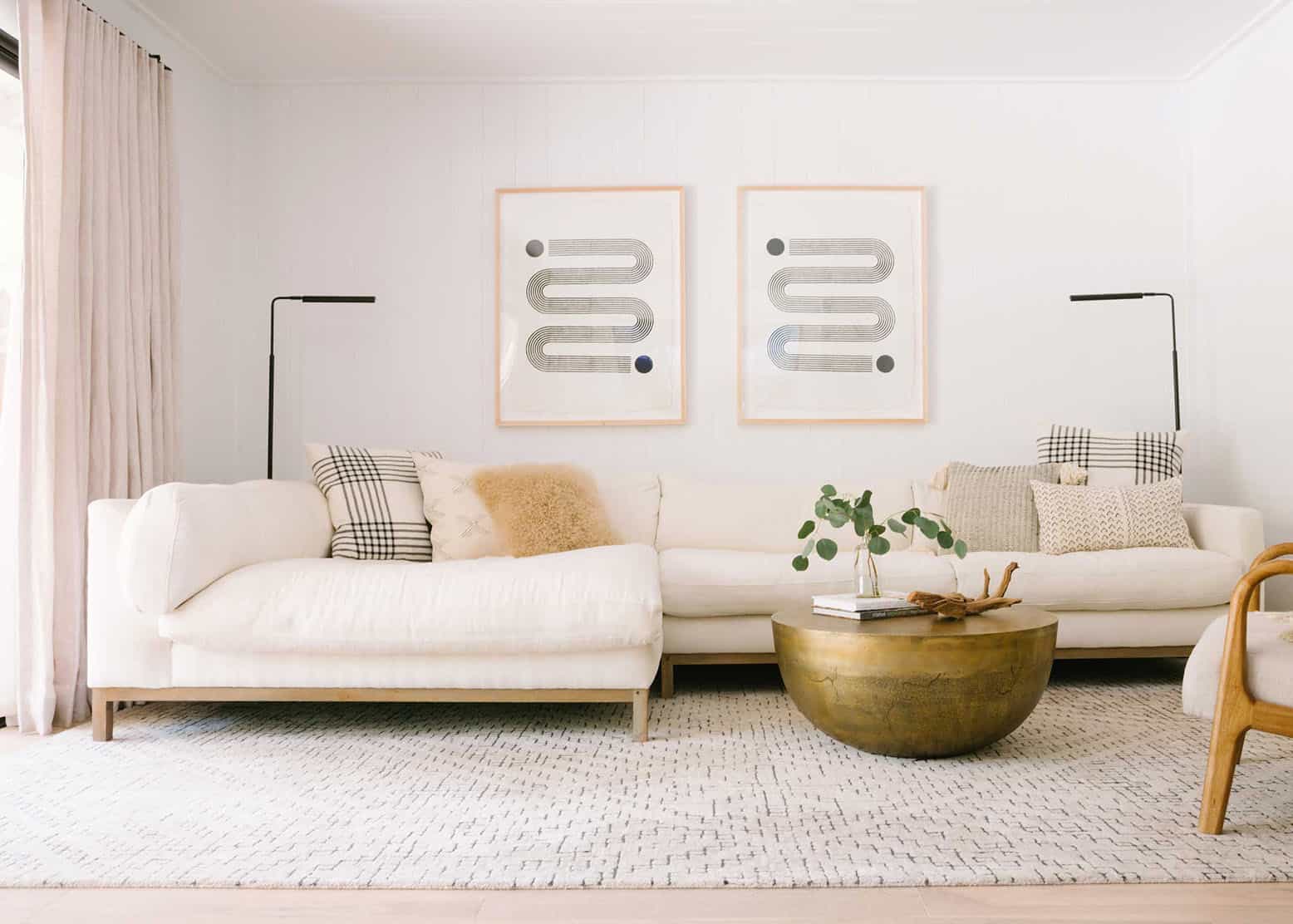
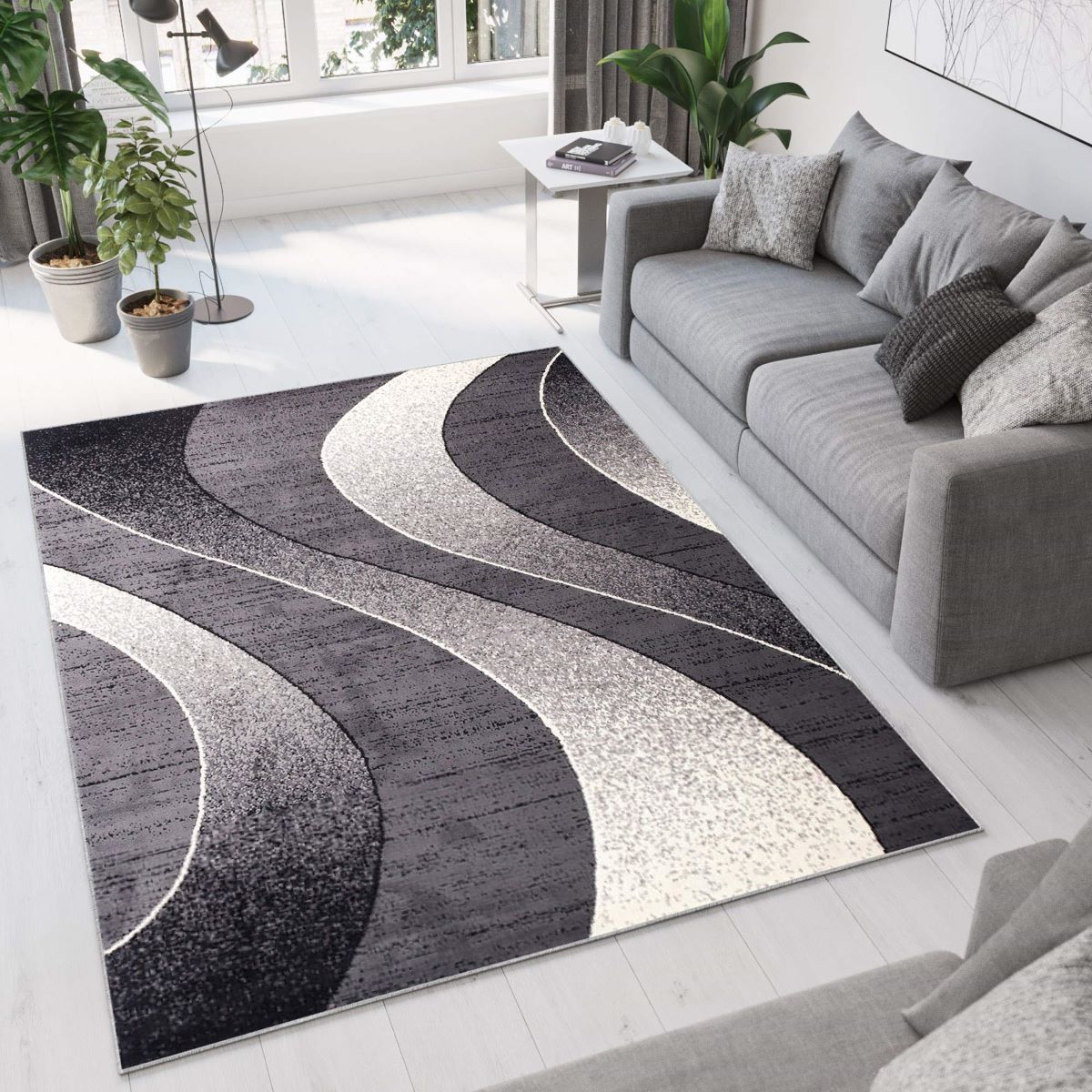
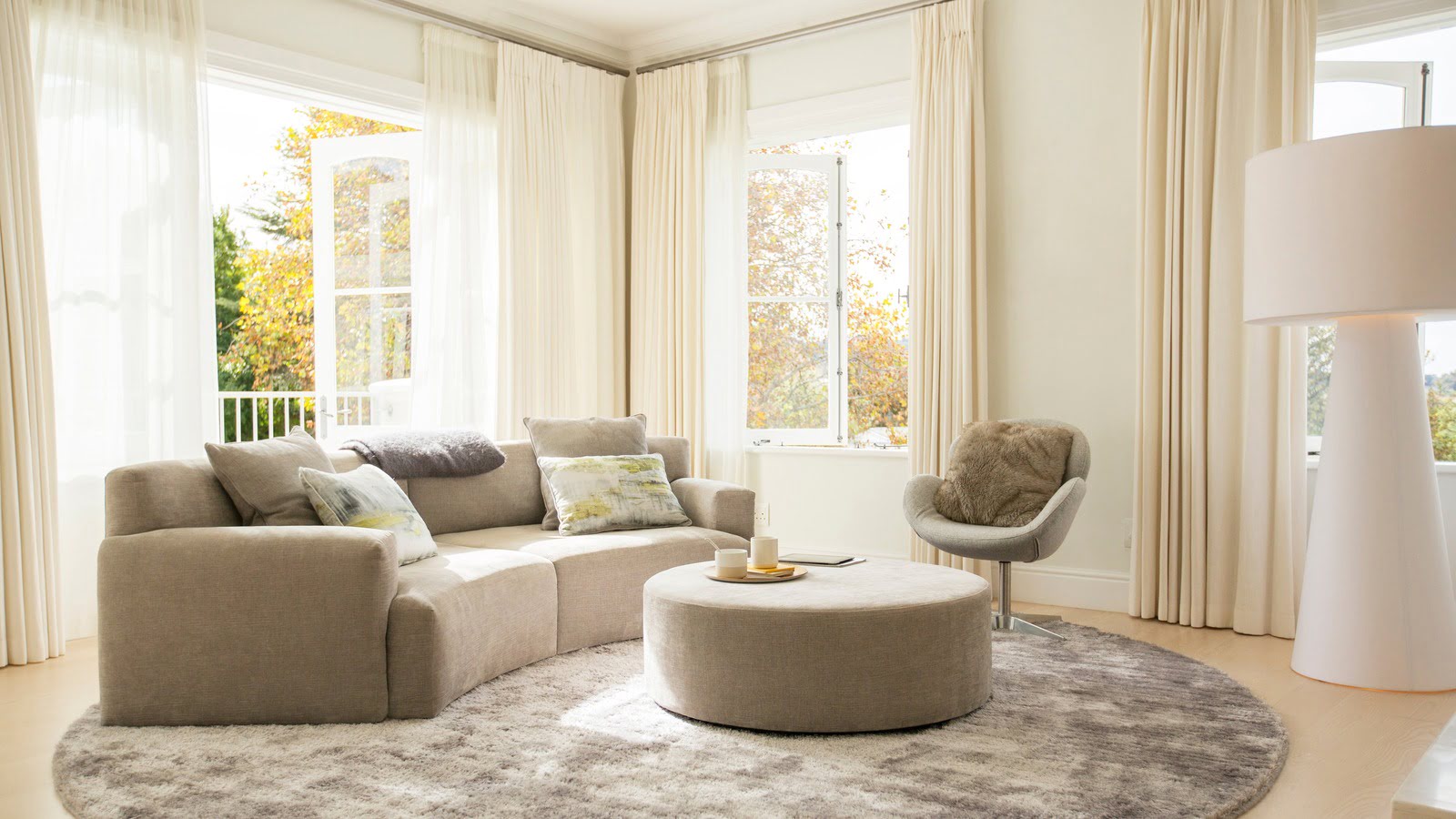
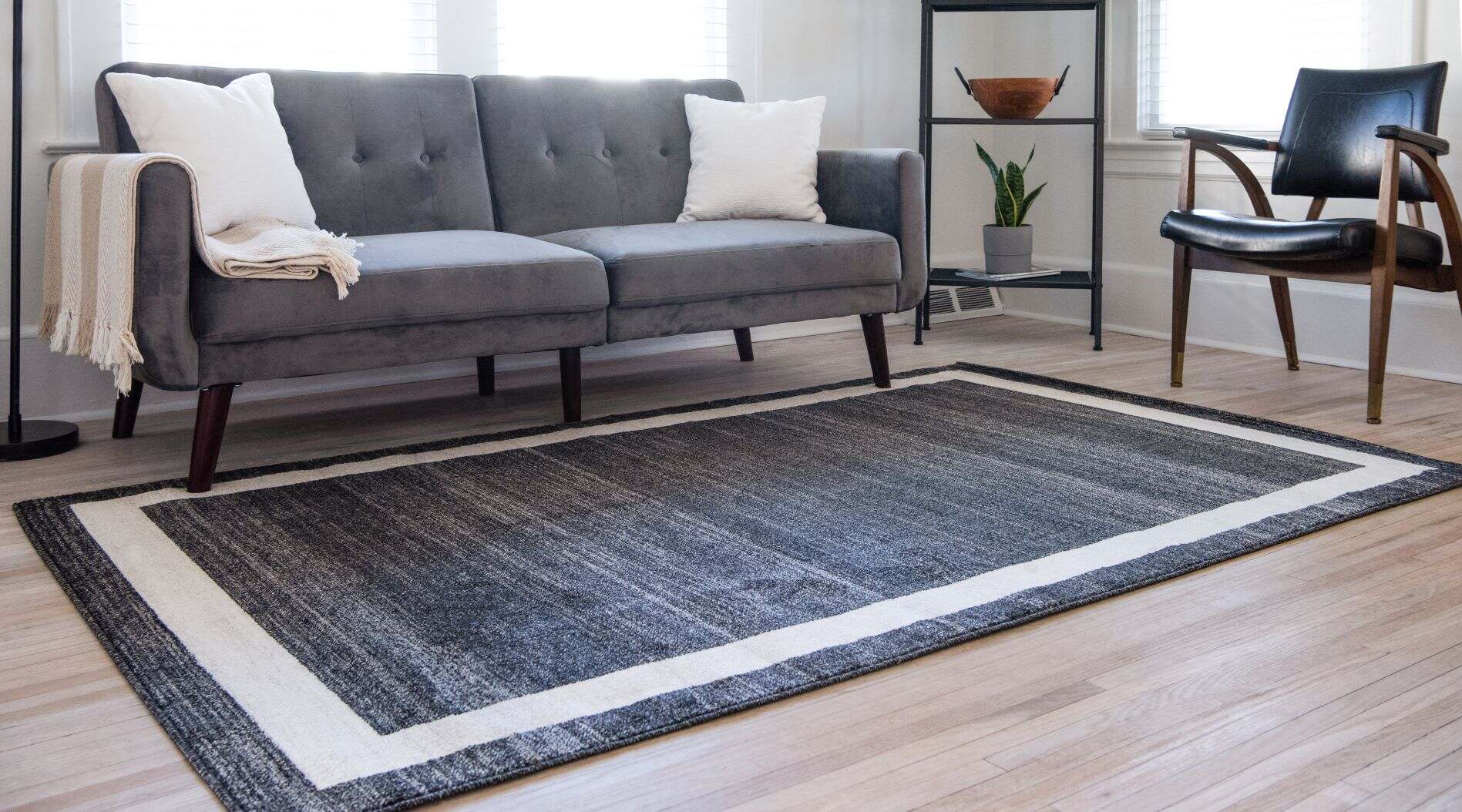
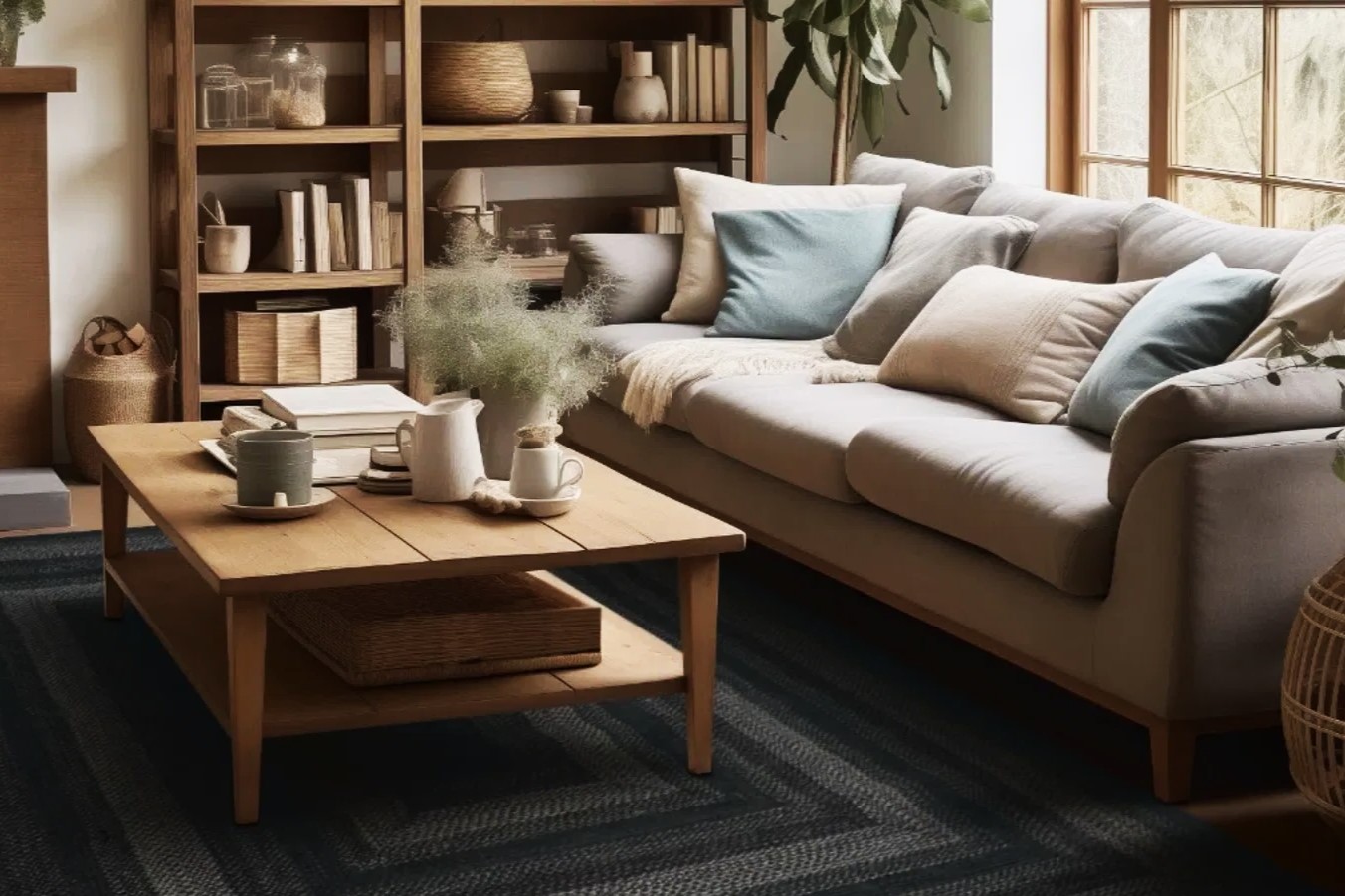
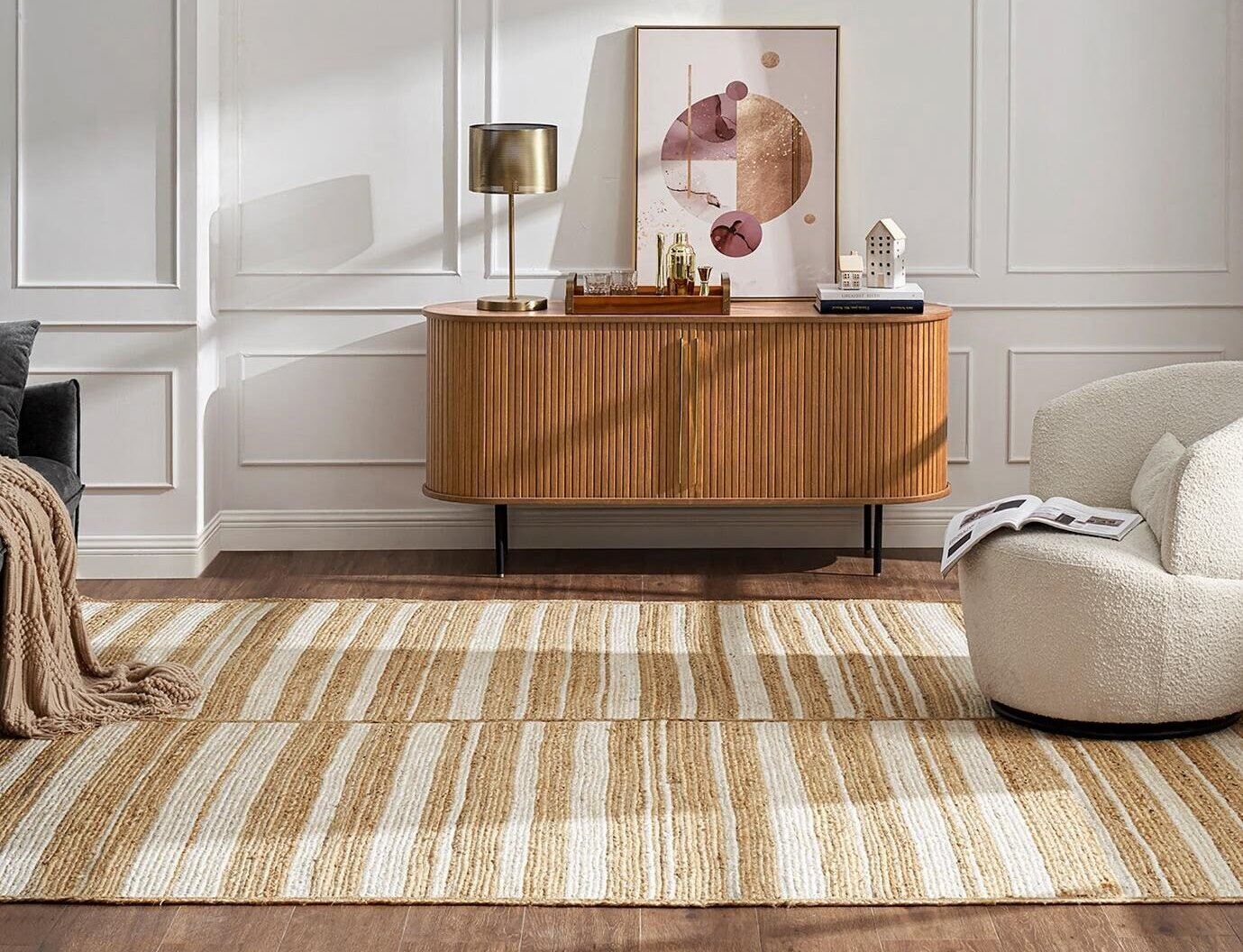
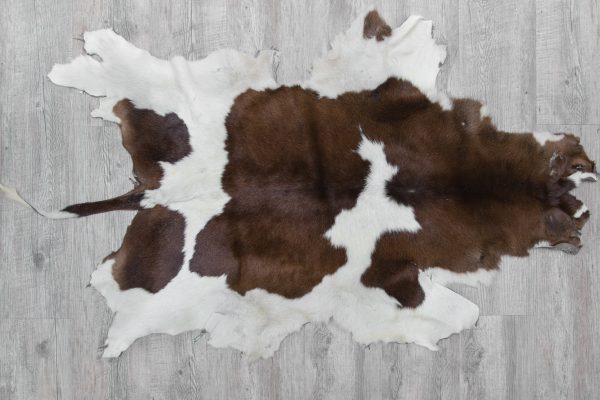
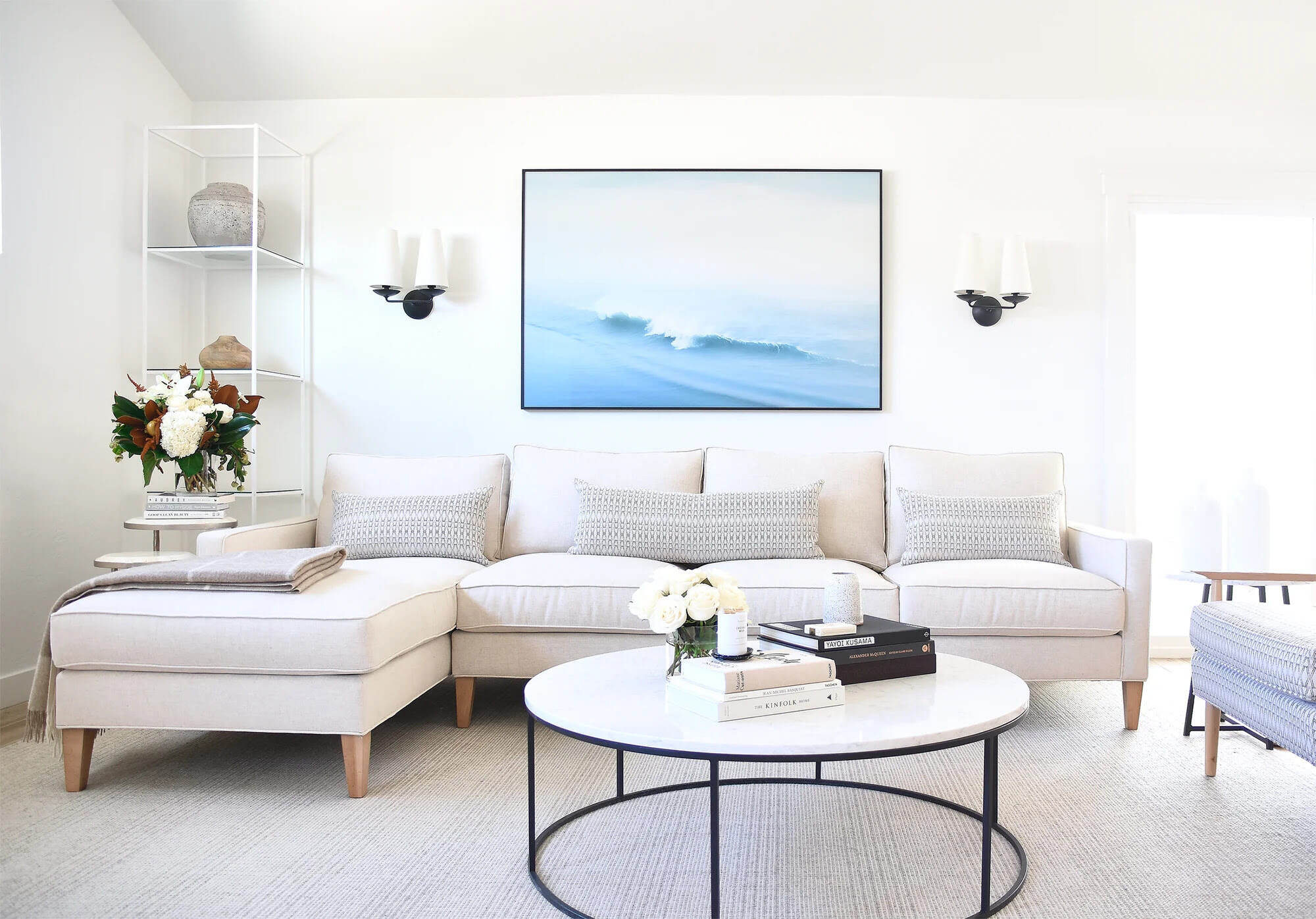
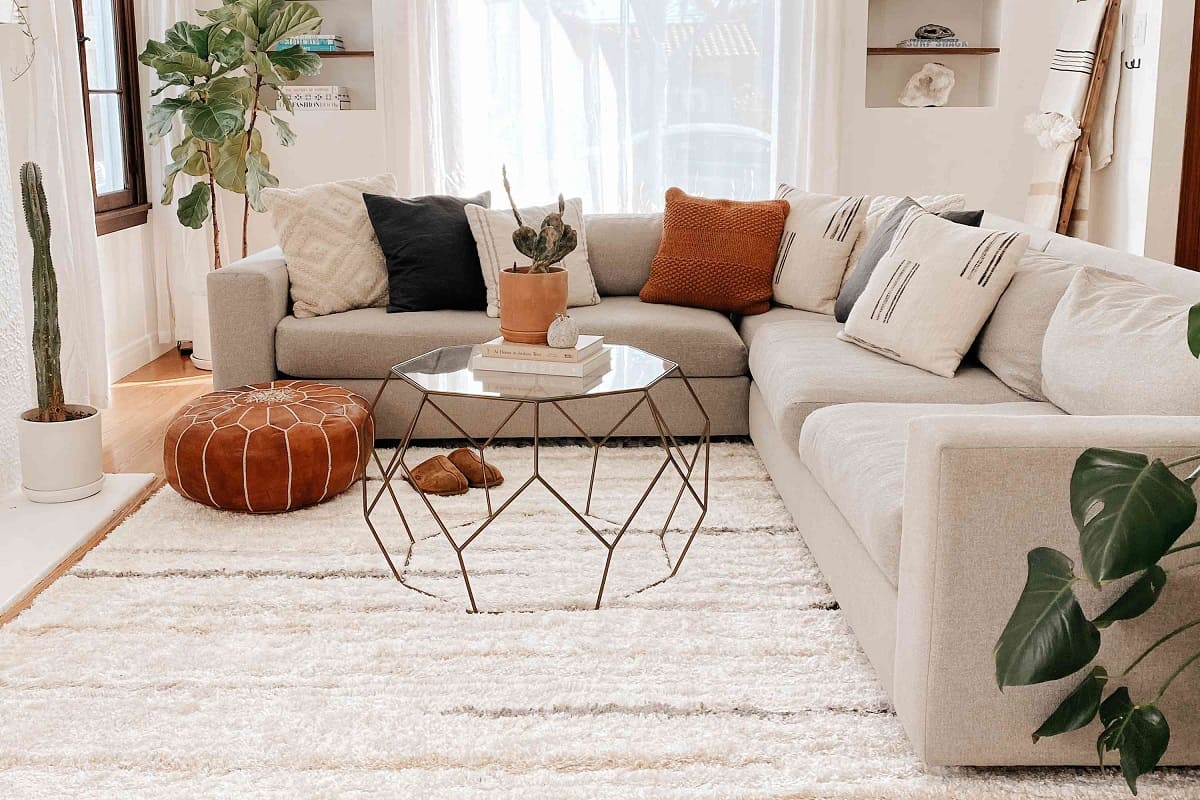
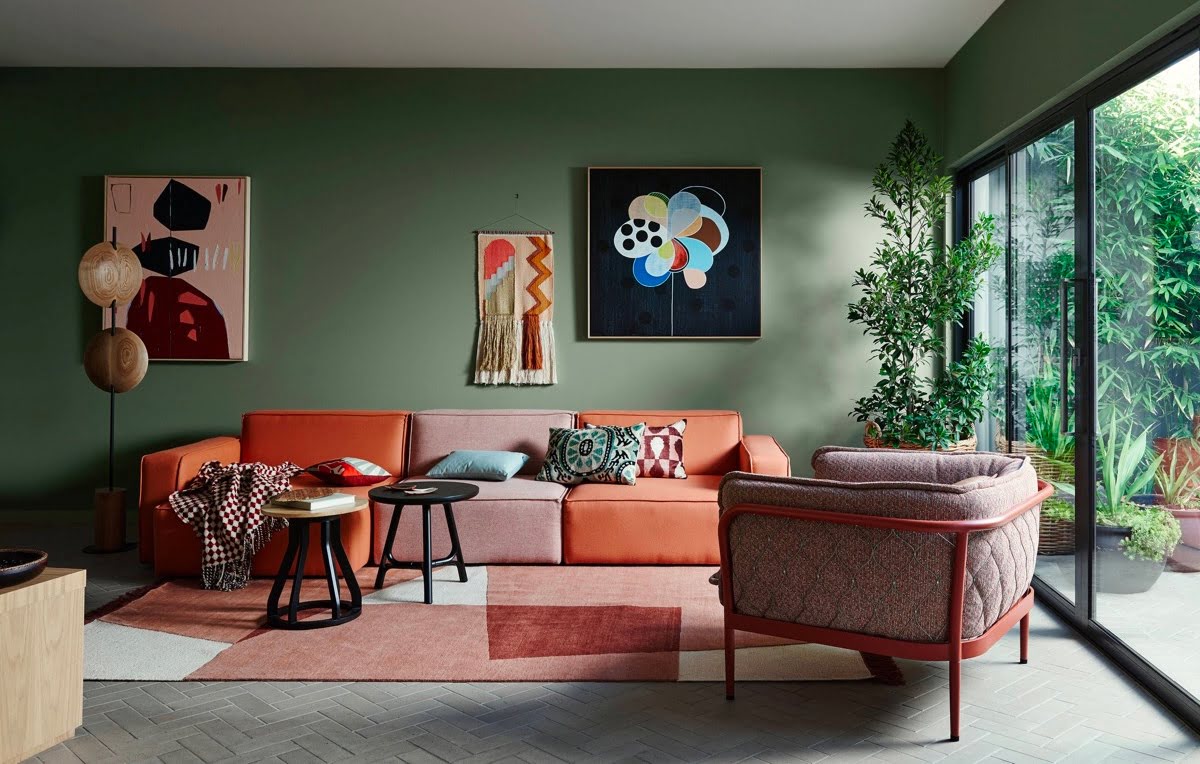
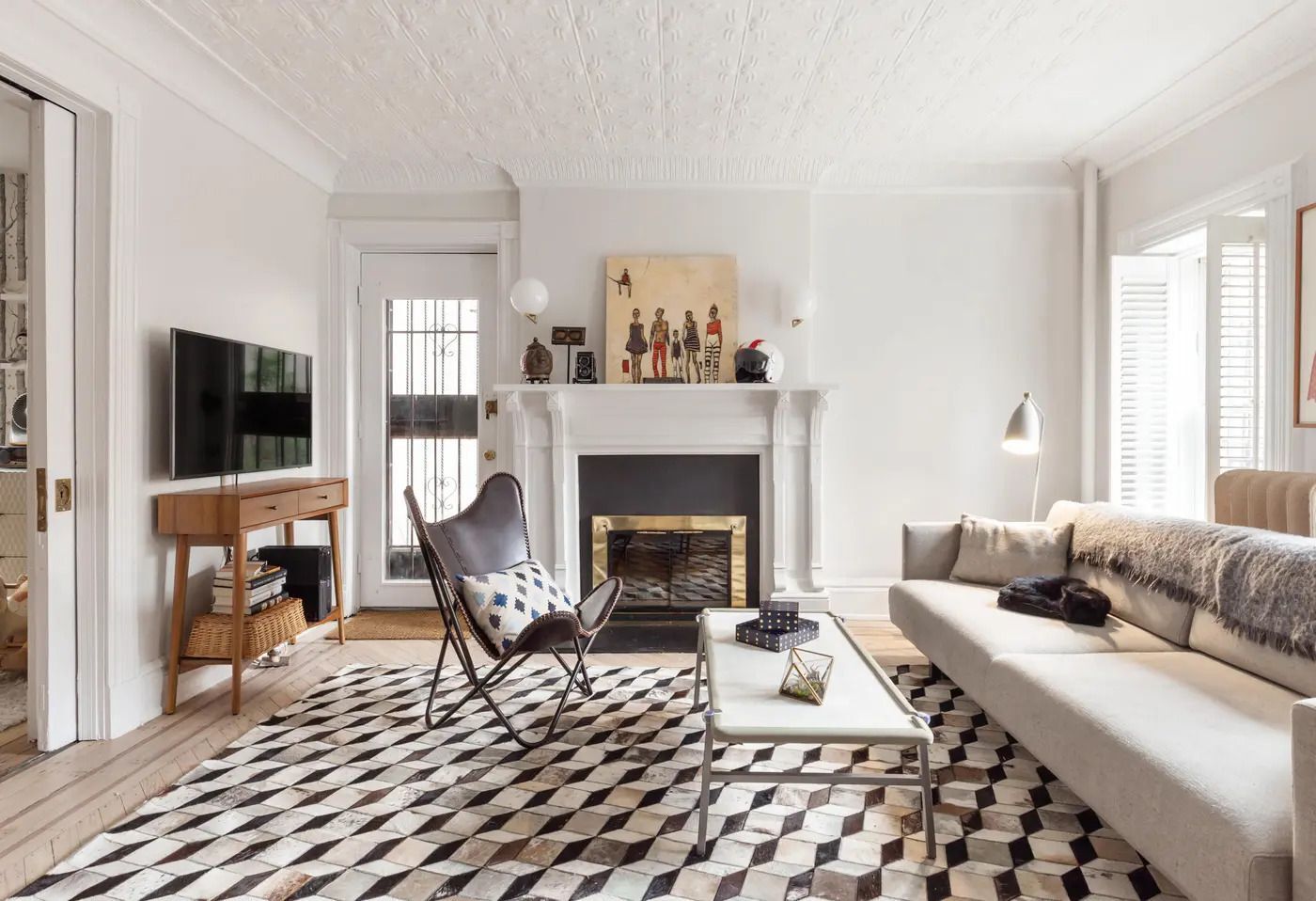

0 thoughts on “How To Layer Rugs In Living Room”